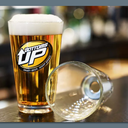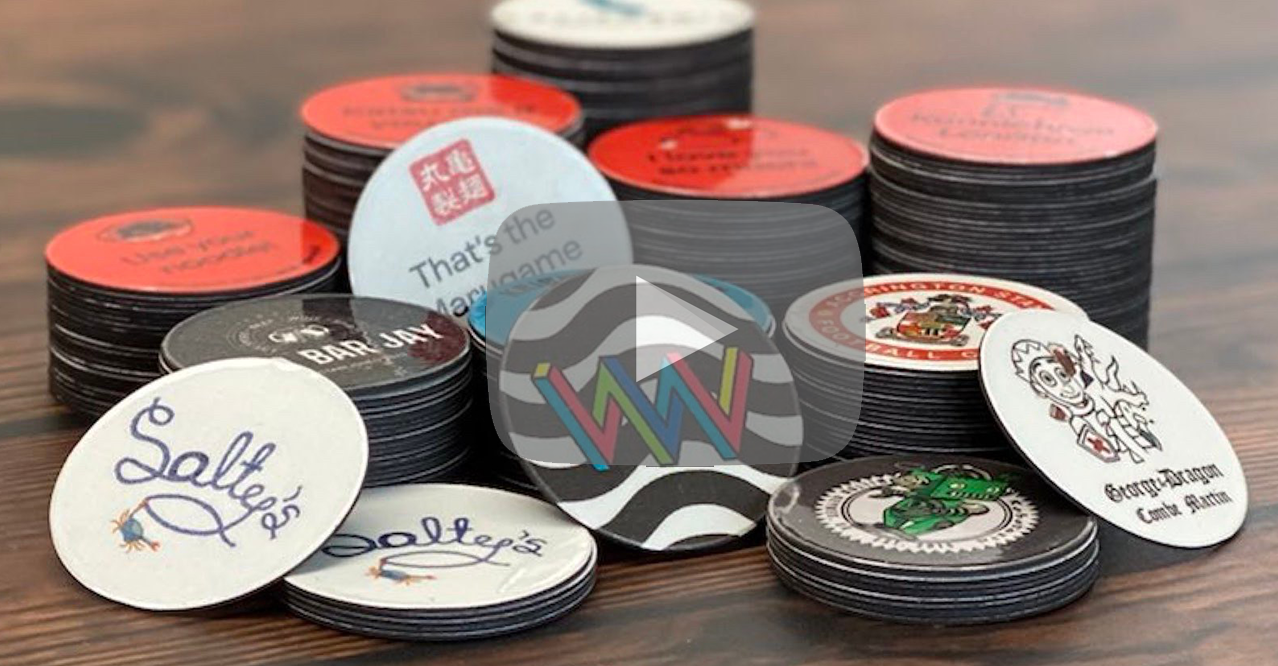Cheers! Bars are pouring beers from the bottom up

Your next beer glass might have a hole in the bottom — the better to fill it from the base up.
What's happening: A new breed of beer dispenser fills cups from the bottom, injecting the liquid to the right level automatically and leaving bartenders free for other tasks.
🍺 Why it matters: Restaurants make their money during peak hours, and anything that maximizes efficiency can improve their bottom line.
Driving the news: Josh Springer, CEO of Bottoms Up Draft Beer Systems, invented the device in 2008 after building a prototype from spare parts.
- A machine that fills beer mugs from the bottom "is timesaving, and there isn't any beer waste," Springer tells Axios.
🍻 How it works: The Bottoms Up glass (or reusable plastic cup) has a hole in the bottom with a metal ring that's sealed with a magnet — a round disc that looks like a poker chip.
- When the cup is clicked into place atop a Bottoms Up "kegerator" — a refrigerated keg — the magnet is lifted and beer starts to flow upward, filling a typical pint in six seconds.
- The cup is filled to a preprogrammed amount, allowing bartenders to make other drinks, check IDs, take payments, etc.
- When the bartender is ready, the cup is ready to pick up — and the magnet falls back into place, sealing the liquid inside. (See a video here.)
What they're saying: "When we started, the hardest part was convincing people that filling a beer through the bottom was a good idea," Springer says.
- "And convincing companies that make glasses or cups that, 'I need a cup, but I want it with a hole in the bottom.'"
- Springer says there's no sacrifice to the quality of the foam or head on the beer, though purists may debate this.
Bonus: The magnets at the bottom of the glass are typically printed with slogans, pictures or discount offers, and can be collected or traded.
- When the glass is empty, "you just poke it out, take it home. Hopefully it's got something fun on it," Springer says.
- Some bars run games and promotions in which people have to collect magnets to spell out a word or phrase.
- "People absolutely collect them," Springer says. "We get pictures of people whose fridges are absolutely covered in them."

State of play: The Indianapolis-based company now serves nearly 400 restaurants nationally, including chains like Taco Bell Cantina, Beef O'Brady's and Walk-On's Sports Bistreaux.
- Its success has spawned two competitors: Reverse Tap (in the U.S.) and Base Flow (in the U.K.).
Case study: A Marriott World Center in Orlando, Florida, put the Bottoms Up system in a pool bar, Springer says. While beer sales remained flat, total sales for the bar "went up about a half million dollars that year."
- The system gave the bartenders more time to mix daiquiris, serve food and chat up guests, Springer says.
- "It really changes the whole paradigm of a bar to be able to walk away while a glass is filling, and then come back and get it and have it be ready."
Yes, but: Bottoms Up — the cups in particular — is more expensive for restaurateurs than conventional alternatives.
- Springer says the system more than pays for itself, not only because of the time it frees up for bartenders, but because much less beer gets spilled and wasted.
- For skeptics, he offers a return-on-investment calculator on his website and a before-and-after video of bartenders filling glasses with a conventional system vs. Bottoms Up at the American Tap Room at Washington, D.C.'s Reagan Airport.
Backstory: Springer, who previously worked as the general manager of a company that made signs, says the idea came to him during a birthday party for his dad at a Mexican restaurant.
- "I stood up and stopped every conversation and said, 'Hey, you know what would be awesome is a pitcher of beer that fills up from the bottom.'"
- Four days later, he had built a working prototype, and then he got it professionally manufactured.
- At first, he tried to sell it to sports stadiums and arenas, only to find it too difficult to break in.
His first customers were overtaxed independent restaurants.
- "We pivoted toward focusing on mom-and-pop shops where we can talk to the bartender, the accountant and the janitor all in one person," Springer says.
- "And they see it — they get it instantly. They're the ones watching the customers wait for them as all they can do is pour beer."
What's next: Expect to start seeing this type of system in action as more bar owners cotton to it — not only because it's fun and festive, but to tackle labor shortages and supply costs.